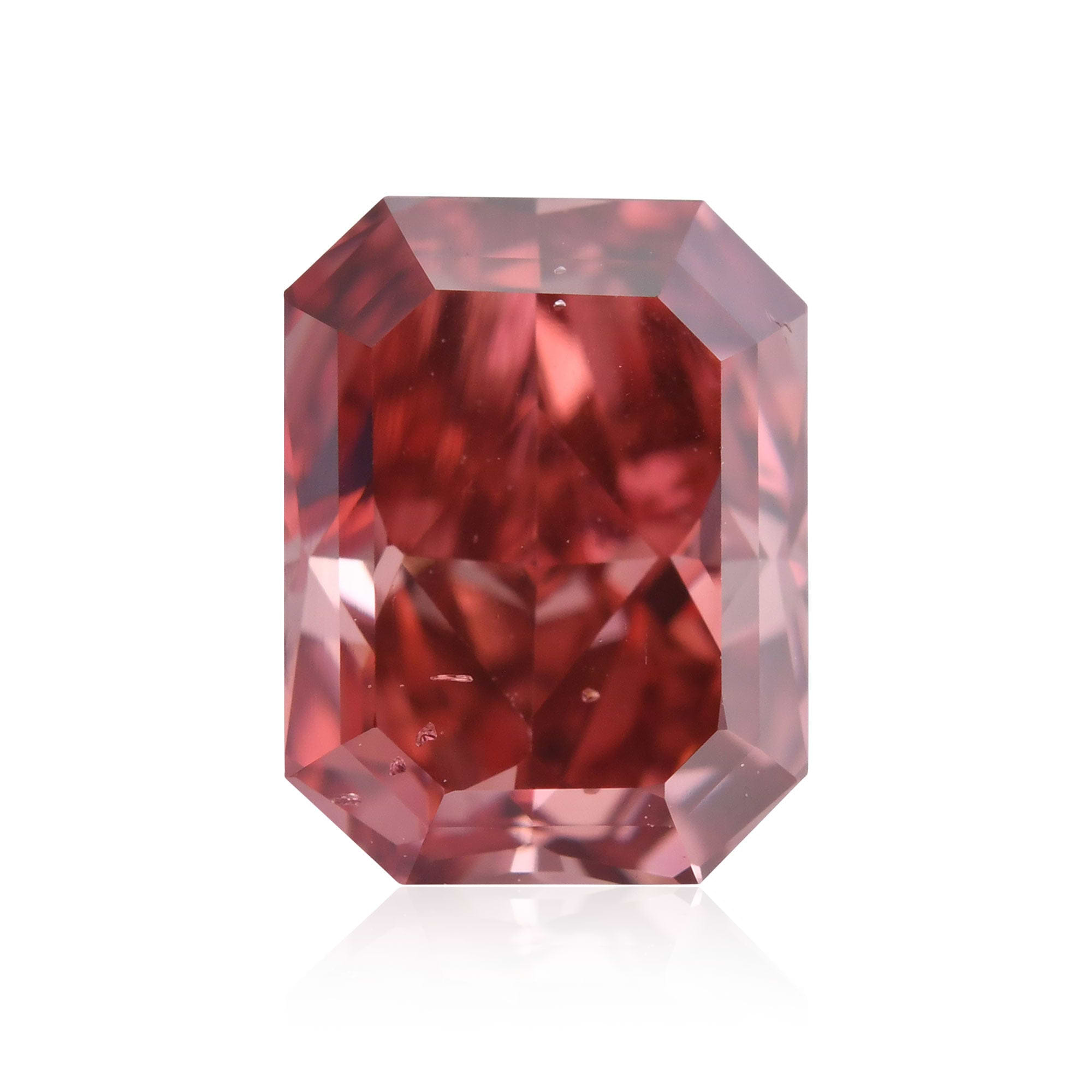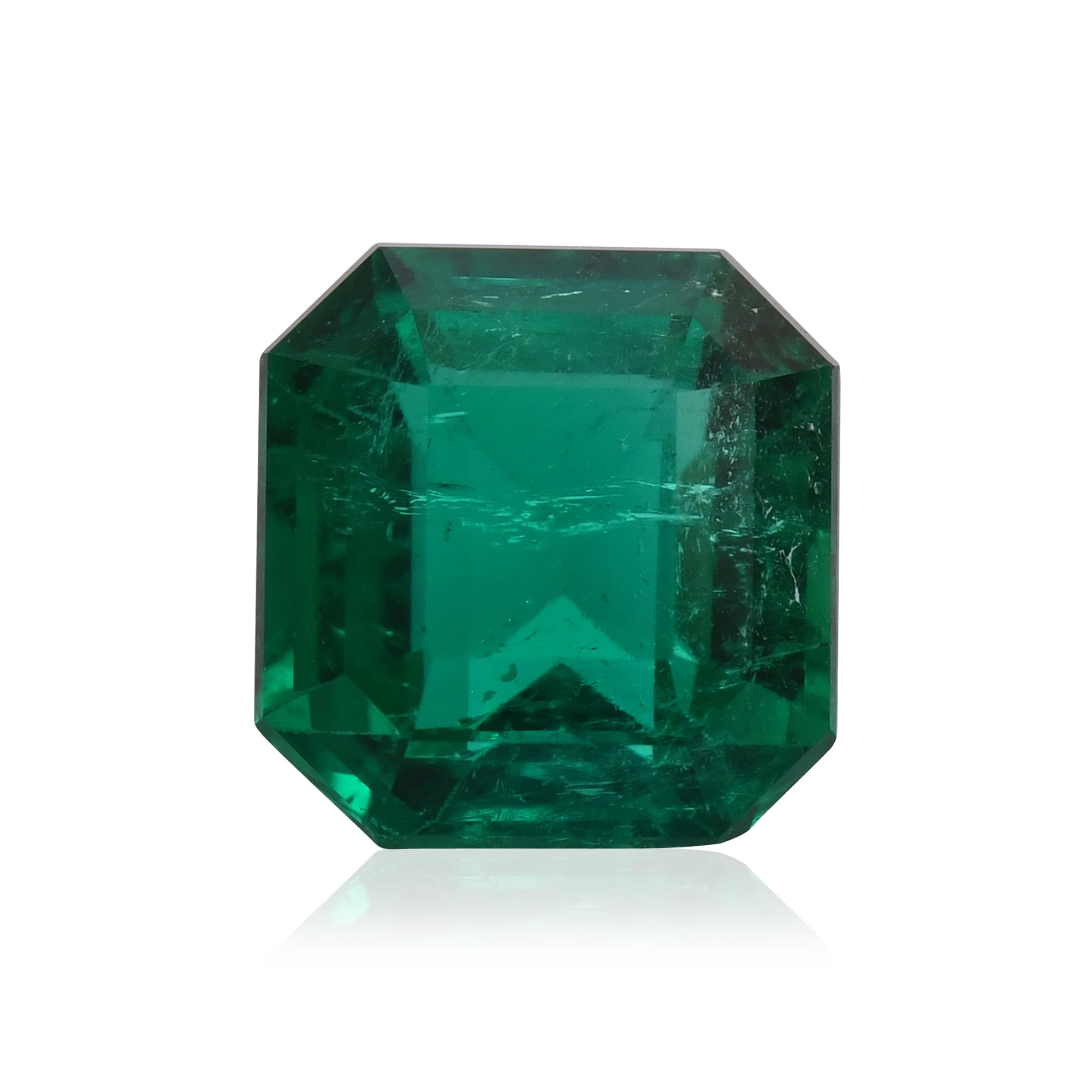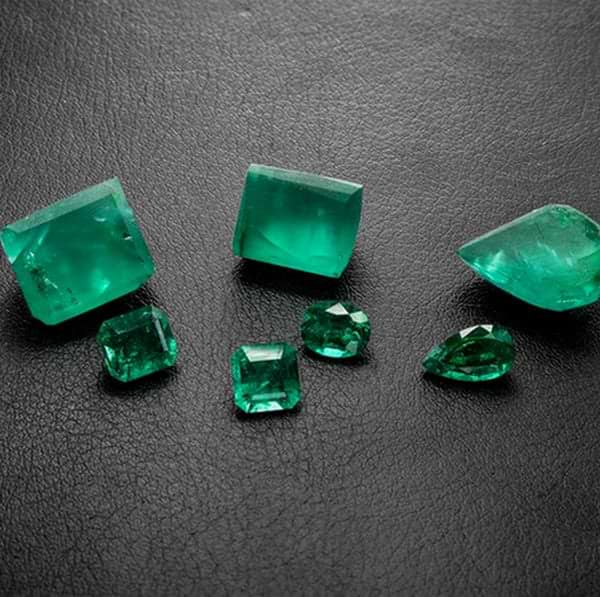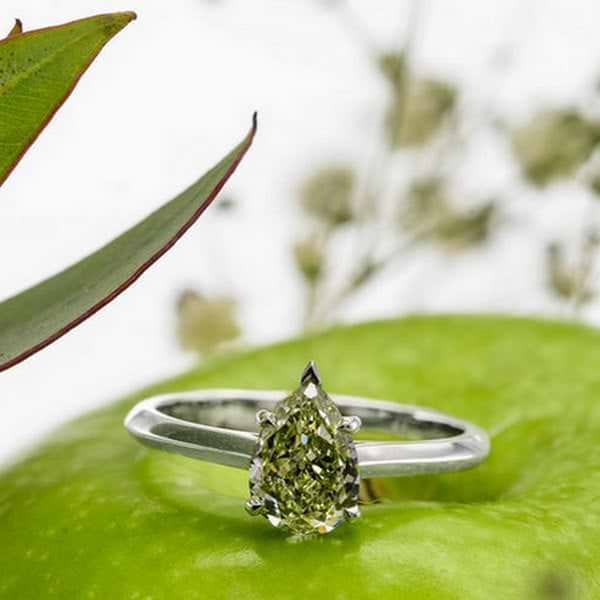Die ganze Idee der Geburtssteine bringt das Sammeln von Schmuck auf eine ganz neue Ebene. Wussten Sie, dass das Konzept der Geburtssteine tatsächlich uralt ist und eine faszinierende Geschichte hat? Viele Historiker glauben, dass die Tradition der Geburtssteine ihren Ursprung in der Antike hat und mit den 12 Stämmen Israels begann. Damals war es Brauch, den heiligen Schmuck eines Priesters als Teil seiner heiligen Kleidung zu etablieren.
Das Wichtigste unter diesen Accessoires war ein mit Juwelen besetzter Gegenstand, der Brustpanzer Aarons. Auf diesem komplexen Schmuckstück befanden sich 12 verschiedene Edelsteine, von denen jeder einen der Stämme Israels repräsentierte. Aus der Idee, einer Gruppe einen bestimmten Edelstein zuzuordnen, entwickelte sich für jeden Monat des Jahres ein eigener Stein, ähnlich den 12 Edelsteinen, die auf Aarons Brustpanzer angeordnet waren.
Insgesamt betrachtet sind die modernen Geburtssteine eine wunderschöne Sammlung von üppigen Steinen, die zu jedem Monat des Jahres passen. Und glücklicherweise hat sich jeder Monat so angepasst, dass er für jeden Monat des Jahres mehr als einen Stein trägt. Das ist doch schön, oder? Vielfalt hilft uns immer dabei, zu entscheiden, was wir wirklich wollen. Die Suche nach einem Geburtsstein für Juni ist einfach, da es 3 Optionen zur Auswahl gibt.
Bedeutung der Geburtssteine für Juni
Steht ein Geburtsstein für Juni auf Ihrer Einkaufsliste? Egal in welchem Monat Sie geboren wurden, Sie können immer stolz darauf sein, dass Sie besondere Edelsteine haben, die sorgfältig ausgewählt wurden, um der einzigartige Geburtsstein Ihres Monats zu werden. Das ist echte Personalisierung, nicht wahr? Aber wir denken gerne, dass diejenigen, die im Monat Juni geboren sind, etwas ganz Besonderes sind.
Da Schmuck immer eine persönliche Angelegenheit ist, fragen Sie sich wahrscheinlich, welche Farbe der Geburtsstein für Juni hat? Das ist der einfache Teil!
Die für Juni-Babys ausgewählten Geburtssteine sind wunderschön und unterscheiden sich stark voneinander. Das bedeutet, dass Sie nie um etwas sehr Persönliches und Bedeutungsvolles als Schmuckstück verlegen sein werden. Lassen Sie uns etwas tiefer graben und herausfinden, wovon wir genau sprechen.
Wenn Sie neu auf der Suche sind, fragen Sie sich vielleicht, was die Geburtssteine für Juni sind?
Schmucksammler kaufen häufig Schmuck, der zu ihrem Geburtsstein für Juni passt. Obwohl es für Juni drei Geburtssteine gibt, nämlich die Perle, den Mondstein und den Alexandrit, wird letzterer meist als der wahre Geburtsstein für Juni angesehen. Dennoch erwarten viele von uns für Juni-Babys eine Perle als Geburtsstein. Haben Sie sich also schon einmal gefragt, warum es für Juni drei Geburtssteine gibt?
Alle Geburtssteine für Juni
Liebhaber von Geburtssteinschmuck haben zum Glück mit 3 verschiedenen Möglichkeiten keine Grenzen bei der Personalisierung der Geburtssteinauswahl. Und wer sagt, dass Sie nicht mehr als einen auswählen können – sogar drei der Geburtssteinoptionen für Juni auf einem Schmuckstück.
Während Geburtssteinringe immer eine schöne Idee sind, denken wir, dass die Kombination aus Perlen, Mondstein und Alexandrit auf einem Anhänger eine schöne und einzigartige Art wäre, einen Junigeburtstag zu feiern. Das Ergebnis wäre ein Geburtssteinanhänger, wie ihn sonst niemand hat, und ein brillantes Stück, das Geschichten erzählt.
Sammler von Geburtssteinen für Juni waren verblüfft, als Alexandrit als Geburtsstein für Juni identifiziert wurde. Seine Seltenheit und seine verführerische Fähigkeit, die Farbe zu ändern, machen diesen Stein einzigartig unter den farbigen Edelsteinen. Als dieser Stein zum ersten Mal entdeckt wurde, soll er am Geburtstag von Zar Alexander im Uralgebirge Russlands gefunden worden sein – daher der Name.
Dieser prachtvolle Stein schien dem Aussterben geweiht, als die Minen im abgelegenen russischen Uralgebirge ihre Alexandritsteine erschöpften. Doch glücklicherweise begannen später Orte wie Brasilien mit der Produktion von Alexandrit, und als diese verschiedenen Vorkommen kommerziell rentabel wurden, waren die Sammler begeistert.
Der Alexandrit als Geburtsstein ersetzte die Perle als Geburtsstein, als man glaubte, dass Alexandrit häufiger vorkommt als Perlen. Heute ist das für den Geburtsstein für Juni nicht mehr der Fall. Hochwertiger Alexandrit ist teuer, extrem selten und sehr begehrt. Es ist eine Geburtssteinfarbe, an der man kaum vorbeikommt.
Der grünlich-blaue Stein ist dafür bekannt, dass er bei unterschiedlicher Beleuchtung seine Farbe ändert – von Tageslicht zu Glühlicht, von Grün zu Rot oder Violett. Die meisten Alexandritsteine haben ein Gewicht von bis zu 5 Karat, wobei größere Steine äußerst schwer zu bekommen sind. Da der Geburtsstein dieses Monats – der Alexandrit – schwer zu bekommen sein kann, sollten Sie bei der Gestaltung eines Geburtssteinschmuckstücks einige der Geburtssteinoptionen wie Perlen oder Mondsteine in Betracht ziehen oder sogar Alexandrit mit anderen Edelsteinen kombinieren.
Wer im Juni Geburtstag hat, kann zwischen drei wunderschönen Geburtssteinen wählen: Perle, Mondstein und Alexandrit. Jeder Stein ist in verschiedenen Farbtönen und Preisklassen erhältlich, sodass im Juni Geborene einen Stein wählen können, der ihrem Geschmack und Budget entspricht.
Alle Geburtssteine für Juni
Woher stammen die Geburtssteine für Juni?
Sehen wir uns alle Geburtssteine für Juni an. Perle, Mondstein und Alexandrit haben alle einen individuellen Ursprung, Eigenschaften und Symbolik. Mit so unterschiedlichen Edelsteinen für die im Juni Geburtstagskind kann jeder seinen Geburtssteinschmuck personalisieren und genau das bekommen, was zu ihm passt.
Schauen wir uns die einzelnen Optionen für Geburtssteine für Juni an – und lassen Sie sich Zeit. Sie sollten gut darüber nachdenken, welcher Stein – oder welche Steine – Ihren Geschmack und Ihre Individualität widerspiegeln.
Pearl Junes Geburtsstein
Perlen, der ursprüngliche traditionelle Geburtsstein für Juni, unterscheiden sich von anderen Edelsteinen, einschließlich der anderen Geburtssteine für Juni. Zunächst einmal sind Perlen organische Edelsteine, die aus tiefen Gewässern mithilfe der bescheidenen Mollusken geerntet werden. Perlen werden sowohl aus tiefen Salzwasser- als auch aus Süßwasserquellen geerntet.
Perlen als Geburtsstein sind eine faszinierende Überlegung. Wir denken, dass Perlen einige der modernsten Optionen für den versierten Schmucksammler darstellen. Während man bei dem Wort Perle früher an eine zierliche Perlenkette dachte, die eine Tante trug, ist die Auswahl an Perlenschmuck heute weitaus größer.
Heute werden Sie erfreut darüber sein, dass Perlen in einer so großen Vielfalt an Formen hergestellt werden, dass sie zu einem sehr modischen organischen Edelstein geworden sind, der von den großen Modehäusern verwendet wird. Neben der runden Perle gibt es Mabé-Perlen – oder Perlen mit einer flachen Rückseite. Diese eignen sich ideal für Broschen, Armbänder und Ohrringe sowie für Ringe.
Es gibt flache, scheibenförmige Perlen und, was am besten ist, große Perlen in freier Form, die sich gut für die Verwendung in trendigem, fantasievollem Schmuck eignen.
Perlen sind in verschiedenen Farben erhältlich, darunter Weiß, Creme, Rosa und Schwarz, und es gibt sie auch in unterschiedlichen Größen.
Perlen-Geburtssteine
Eine Perle entsteht, wenn ein Reizstoff wie ein Parasit oder ein Sandkorn in das Fleisch einer Auster, Muschel oder Miesmuschel eindringt. Dann bildet sich Perlmutt, eine schützende Substanz, über dem Reizstoff. Im Laufe der Zeit sammeln sich mehrere Schichten Perlmutt an und es entsteht eine glänzende Perle.
Perlen gelten als zeitlose, klassische Schmuckstücke, die nie aus der Mode kommen. Jede Schmuckschatulle sollte mindestens ein Perlenschmuckstück enthalten, sei es eine einfache Perlenkette, Perlenohrstecker oder ein Perlenarmband. Winzige orangefarbene Diamant- Seitensteine ergeben eine schöne Kombination für ein traditionelles Paar Perlenohrringe.
LEIBISH 0,74 Karat, Fancy Vivid Orange Diamant, ovale Form, SI2-Klarheit, GIA
Vielseitigkeit von Perlen-Geburtssteinen
Perlen findet man auch auf maskulinem Schmuck! Besonders die stark wirkenden schwarzen Südseeperlen – diese werden häufig mit Lederbändern kombiniert, um ein eindrucksvolles Herrenarmband oder eine Halskette herzustellen. Der Fantasie sind bei Perlen keine Grenzen gesetzt – die einzige Grenze ist die eigene Vorstellungskraft, wenn es darum geht, dieses aufregende Naturjuwel zu genießen.
Eine der besonderen Eigenschaften von Perlen ist ihre antike Herkunft. Schauen Sie sich Museumsgemälde berühmter Herrscher oder reicher Aristokraten an. Oft werden sie mit Perlen als starkes Symbol ihres Reichtums, ihrer Macht und ihrer Vornehmheit dargestellt. Das sind alles Eigenschaften, die wir auch heute noch gerne mit uns in Verbindung bringen würden. Ein Perlen-Geburtsstein vermittelt diese ganz besonderen Eigenschaften – und das alles, ohne dass wir jemals ein Wort sagen müssen.
Und so alt Perlen auch sind, sie haben einen zeitlosen Reiz, der nie verblasst. Die Perlen, die Sie heute sammeln, sind also relevant, stilvoll und zeigen Ihren Sinn für Mode. Glücklicherweise gibt es heute dank der Fülle ausgefeilter Perlenzuchttechniken eine nahezu endlose Vielfalt an Perlen. Man könnte tatsächlich eine bedeutende Sammlung von Perlenschmuck aufbauen, aber nie dasselbe zweimal tragen.
Durch die moderne Verwendung von Perlen durch innovative Designer können Perlenliebhaber heute alles finden, was ihr Herz begehrt, und sich an Perlen in allen Farben und Formen in stilvollen Fassungen erfreuen, die die Trägerin zu einer echten Trendsetterin machen.
Mondstein-Geburtsstein
Mondstein, Geburtsstein, selbst sein Name ist traumhaft, nicht wahr? Er beschwört Wunschvorstellungen und fantasievolle „jenseitige“ Erfahrungen herauf. Wir lieben den Mond – und natürlich lieben wir Mondstein. Sammler kennen diesen Stein vielleicht noch nicht, aber in Wirklichkeit wurde Mondstein schon vor Jahrhunderten gefunden. Wir wissen das, weil der antike römische Naturforscher Plinius der Ältere das schimmernde Aussehen des Mondsteins in Bezug auf die Mondphasen beschrieb.
Die hypnotische Adulareszenz dieses Steins – oder sein milchiges Leuchten mit Schimmern in Regenbogenfarben – lässt den Stein wie auf dem Wasser schwimmendes Mondlicht erscheinen, sagen manche.
Ungewöhnliche Färbung von Mondstein
Wenn Sie diesen geheimnisvollen Stein unter dem Mikroskop genauer betrachten würden, würden Sie mikroskopische Schichten aus Feldspat entdecken, die eine Streuung des Lichts auf der Oberfläche des Steins verursachen und so die charakteristische, wogende Adulareszenz erzeugen, die wir so lieben gelernt haben.
Experten sagen, dass diese Farbpalette des Regenbogens, die im Mondstein zu finden ist, seinen Preis beeinflusst. Steine mit stärker ausgeprägtem Blauanteil werden als wertvoller angesehen, da sie seltener vorkommen als Exemplare mit sichtbaren Rosa-, Orange-, Pfirsich- und Gelbtönen auf dem Stein.
Der Mondstein ist nach seiner Ähnlichkeit mit dem Mondschein benannt und ist eine Art Feldspat, dessen Farbe von durchscheinend über bläulich-weiß bis hin zu einem pfirsichfarbenen Ton variiert. Bevor der Mondstein mit dem Monat Juni in Verbindung gebracht wurde, galt er einst als heiliger Stein, der seinem Träger ein großes Verständnis verlieh. Manche glaubten sogar, er könne sie unsichtbar machen.
Mondsteine Geburtssteine
Die Lichtdurchlässigkeit eines Mondsteins macht ihn zu einem interessanten Edelstein, den man auf der Haut tragen kann. Die helleren Mondsteine lassen Licht durch, und diese Edelsteine können fast den Hautton annehmen und mit dem Teint des Trägers verschmelzen. Man könnte sagen, dass dieser Stein leicht eins mit seinem Träger wird.
Wussten Sie, dass einige Mondsteine einen Stern- oder Katzenaugeneffekt aufweisen? Es gibt so viele Variationen dieses atemberaubenden Edelsteins, dass Sie sicher einen finden, der genau zu Ihnen passt.
Pflege von Mondstein
Mit einem Mohs-Wert von 6 auf der Härteskala sollten wir den Stein mit Sorgfalt tragen, damit sein Glanz perfekt erhalten bleibt. Wenn Sie ein sehr aktiver Mensch sind und Ihre Hände viel bei der Arbeit oder beim Sport benutzen, sollten Sie Ihren Mondstein in Ohrringe oder Anhänger einfassen lassen – dort besteht kaum die Gefahr, dass er grober Behandlung zum Opfer fällt.
Mondstein hat seit jeher eine lange Liste von Fans. Seine ungewöhnliche, scheinbar leuchtende Präsenz fasziniert einen. Man ist von seiner Anziehungskraft gefangen – seiner Fähigkeit, einen in den Stein hineinschauen zu lassen, um all die nuancierten Farbtöne zu sehen, die dem Betrachter entgegenschimmern. Mondstein kann als einer der vielseitigsten Edelsteine entdeckt werden, die eine Person jemals besitzen wird. Bei so vielen Farbtönen, die aus dem Inneren des Steins hervorzustrahlen scheinen, sind Sammler erfreut zu sehen, dass der Stein die Farbtöne dessen anzunehmen scheint, was auch immer die Person trägt. Ob Mann oder Frau, der mysteriöse Mondstein ist ein persönliches Statement und mit Sicherheit ein Gesprächsstarter.
Diese strahlenden Steine findet man in Sri Lanka, Indien, Madagaskar, Brasilien und den Vereinigten Staaten. Da der Stein in so vielen Variationen vorkommt, sind endlose Kombinationsmöglichkeiten möglich. Wenn der Stein fast weiß oder durchscheinend ist, passt er gut zu Perlen oder weißen Diamanten. Die dunkler getönten Mondsteine würden einen schönen Kontrast zu Perlen, weißen Diamanten und sogar farbigen Diamanten bilden. Hätten Sie jemals gedacht, dass Ihr Geburtsstein für Juni so verführerisch sein könnte?
LEIBISCH 6,68 Karat, Grau, Mondstein, Ovale Form
Alexandrit, Geburtsstein für Juni
Alexandrit gilt als der moderne Geburtsstein für Juni und ist in vielen verschiedenen Farbtönen erhältlich. Er ist ein atemberaubendes Schmuckstück. Da dieser Stein so selten ist, kann er mit anderen Edelsteinen wie Diamanten , Amethysten oder Smaragden kombiniert werden. Je nach Farbe können ergänzende Nebensteine gewählt werden. Als Geburtstagsgeschenk könnte eine Halskette mit einem Alexandritstein, umgeben von Diamanten, sehr begehrenswert sein.
Alexandrit – Geburtsstein für Juni
Natürlich dauerte es eine Weile, bis sie das Phänomen der Farbveränderung verstanden. Es wird nur deutlich, wenn man den Stein sorgfältig unter verschiedenen Lichtquellen untersucht - hauptsächlich Tageslicht im Freien und dann unter Glühlampenlicht im Innenbereich. Als er entdeckt wurde, verwendete Russland zur nächtlichen Innenbeleuchtung echtes Kerzenlicht!
Im Gegensatz zu anderen beliebten farbigen Edelsteinen gilt Alexandrit als relativ moderner Edelstein. Er wurde durch Zufall entdeckt, als Bergleute in den russischen Smaragdminen des abgelegenen Uralgebirges arbeiteten.
Farbwechselnder Alexandrit
Welch ein Schock und eine große Freude, nicht nur ein neues Edelsteinmaterial (Chrysoberyll) zu entdecken, sondern auch eines, das seine Farbe ändert. Diese unerwartete Aufregung bescherte der Welt der Sammler einen aufregenden neuen Edelstein. Noch heute verblüffen seine Farbwechseleigenschaften den abgebrühtesten Schmuckliebhaber. Aber die außerordentliche Qualität des russischen Alexandrits legte die Messlatte für jeden anderswo hergestellten Alexandrit ziemlich hoch – etwas, das in den kommenden Jahren nicht mehr geschah.
Alle Sammler möchten die Härte der Edelsteine kennen, die sie lieben, und Alexandrit ist da keine Ausnahme. Dieser schöne Stein hat einen soliden Wert von 8,5 auf der Mohs-Skala, was ihn sehr haltbar macht und ihn für eine bemerkenswerte Politur gut geeignet macht. Dieser Stein wird jahrelang wie neu aussehen, selbst wenn Sie ihn regelmäßig tragen. Er ist nur geringfügig weniger hart als Saphir, aber haltbarer als Granat, ein weiterer beliebter Edelstein, der ebenfalls seine Farbe ändern kann.
Ein Alexandritstein kann auch als Haupt- oder Nebenstein für einen Verlobungsring verwendet werden. Je stärker die Farbänderung des Alexandrits ist, desto mehr ist er wert. Alexandritvorkommen, die als „Smaragd bei Tag und Rubin bei Nacht“ bekannt sind, befinden sich in Simbabwe, Sri Lanka, Tansania, Madagaskar, Brasilien und Burma.
LEIBISH Alexandrit Farbwechsel
Was macht Alexandrit so selten und warum gilt er als der wahre Geburtsstein für Juni?
Da die Farben und ihre Farbwechsel-Alternativen in verschiedenen Teilen der Welt unterschiedlich sein können, können sachkundige Fachleute anhand der Farbkombination oft genau feststellen, wo der Stein gefunden wurde. Das liegt daran, dass die Geologie des Fundorts der Steine oft bestimmt, wie Edelsteine aussehen.
Anders als der klassische russische Alexandrit, der bei unterschiedlicher Beleuchtung von Grün nach Rot wechselt, erkennt man Alexandrit aus Brasilien schnell als einzigartige Variante. Steine aus diesen südamerikanischen Lagerstätten erscheinen bei Tageslicht blaugrün oder tief bläulich-grün. Aber unter Glühlampenlicht wechseln die Steine zu einem satten, tiefen Violett.
Beide Alexandritquellen erzeugen exquisite Farben und reizvolle Farbwechsel. Je vollständiger die Farbänderung zu sehen ist, desto wertvoller ist der Stein. Er ist zu einem echten Geburtsstein für den Juni mit unzähligen Fans geworden.
Eine sentimentale Wahl - Geburtssteine für Juni
Ziehen Sie alle Geburtssteine für Juni als Möglichkeit in Betracht. Ob Sie sich für einen Alexandrit entscheiden, so selten und teuer er auch sein mag, oder sich für die anderen Geburtssteine für Juni entscheiden, die Wahl eines Geschenks mit dem Geburtsstein des Empfängers kann eine rührende Hommage sein. Jedes Schmuckstück mit einem Geburtsstein für Juni ist ein Geschenk, das für immer geschätzt wird.
Sie möchten einem besonderen Menschen ein wichtiges Geschenk machen? Zu einem aufmerksamen Geschenk gehört auch, dass Sie den Geburtsstein des Empfängers ausfindig machen, um ihm ein ganz besonderes Liebesgeschenk zu machen. Sie werden feststellen, dass ein Geburtsstein ein sentimentales Geschenk sein kann, das dem Empfänger mit jedem Jahr mehr Bedeutung verleiht.
LEIBISH Ovaler Doppel-Halo-Anhänger aus Alexandrit und Diamant
Oder überlegen Sie, sich selbst ein besonderes Stück zu kaufen, um an einen persönlichen Meilenstein zu erinnern? Das ist großartig. Aber wussten Sie, dass es genauso lohnenswert ist, sich selbst etwas „einfach so“ zu kaufen? Wir lernen schnell, wie schnell die Tage vergehen, also liegt es an uns, jeden Tag zu einem Fest zu machen und anzuerkennen, wie vergänglich und kostbar jeder Tag wirklich ist.
Sie fragen sich, wie Sie es richtig machen? Da fallen mir einige Dinge ein. Achten Sie zunächst genau darauf, was ihnen gefällt. Vielleicht haben sie im Gespräch etwas darüber gesagt, was sie wirklich lieben – oder sogar auf ein Schmuckstück hingewiesen, das sie beim Einkaufen oder Fernsehen bewundern. Aber – Sie können immer fragen! So können Sie sicher sein, dass Sie auf dem richtigen Weg sind.
Die Leute möchten wissen, dass andere an ihren Ansichten interessiert sind. Warum also nicht beiläufig fragen, ob sie schon einmal die Gelegenheit hatten, einen Geburtsstein zu bekommen – welchen der drei, Perle, Mondstein oder Alexandrit, würden sie am wahrscheinlichsten ständig tragen?
Bedeutungsvolle Geschenke mit dem Geburtsstein für Juni
Wenn Sie sich für ein besonderes Geschenk entscheiden, denken Sie sorgfältig darüber nach. Je besser Sie den Geschmack und die Vorlieben des Empfängers (auch Ihrer selbst!) kennen, desto wahrscheinlicher ist es, dass Sie ein Geschenk kaufen, das im Laufe der Jahre an Wert gewinnt. Wenn Sie ein sorgfältig durchdachtes Schmuckstück mit Geburtssteinen verschenken, wird der Empfänger sofort eine Bindung dazu aufbauen.
Und wussten Sie, dass Sie dem Empfänger Ihre aufrichtigen, tiefempfundenen Gefühle deutlich machen können, wenn Sie sich die Zeit nehmen, sorgfältig nicht nur etwas auszuwählen, von dem Sie wissen, dass er es zu schätzen wissen wird, sondern auch, wenn es sich dabei auch um seinen Geburtsstein handelt? Sie haben ihm ein Geschenk gemacht, das er sein ganzes Leben lang in Erinnerung behalten wird.
So viel Gefühl, ohne jemals ein Wort zu sagen. Ja, zu wissen, was der Empfänger schätzt, insbesondere wenn es sich um ein Schmuckstück handelt, das er oder sie sich niemals selbst gönnen würde, wird sein Herz für immer erwärmen.
Jeder Schmuck, egal ob Sie ihn selbst kaufen oder verschenken, hat eine gewisse Bedeutung. Schmuck mit Geburtssteinen wird immer zu den persönlichsten und bedeutungsvollsten Dingen gehören, die man besitzen kann. Vielleicht haben Sie nicht viele Freunde, die im selben Monat geboren sind wie Sie, und möchten ihnen deshalb gerne die Einzelheiten zu Ihrem eigenen Geburtsstein mitteilen.
Allerdings muss der ausgewählte Geburtsstein für Juni auch zum Empfänger passen. Die Kombination mit einem passenden Schmuckstück kann die Gefühle des Schenkenden ausdrücken und gleichzeitig Wertschätzung hervorrufen.





























































































































